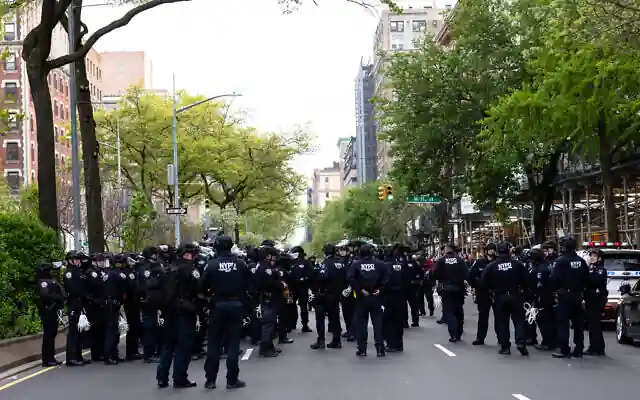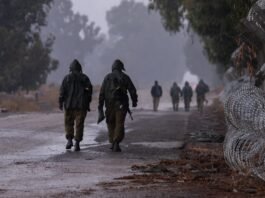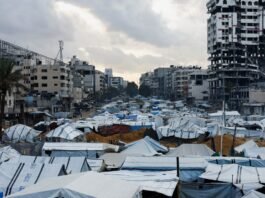
|
Getting your Trinity Audio player ready...
|
In a dramatic showdown on Tuesday night, New York Police Department officers cleared 30 to 40 protesters from inside Columbia University’s historic Hamilton Hall.
The occupation, which began earlier in the day, saw demonstrators rallying against Israel and extending their reach from an encampment elsewhere on the Ivy League school’s campus.
The scene unfolded shortly after 9 p.m. as police, equipped with helmets, zip ties, and riot shields, massed at the college’s entrance.
Scores of officers climbed through a window to enter the occupied building, swiftly apprehending multiple protesters who were then taken into custody and removed from campus on buses.
This police action, which came at the behest of the university’s president, marked a stark escalation in tensions following the protesters’ initial occupation of Hamilton Hall shortly after midnight Tuesday.
The demonstrators had expanded their presence from an anti-Israel tent encampment elsewhere on campus, prompting the university to seek assistance from law enforcement to ensure safety and restore order.
The standoff between administrators and activists reached a critical point as Columbia University officials threatened academic expulsion for students involved in the occupation.
Despite being provided with the opportunity to leave peacefully, protesters declined, choosing instead to escalate the situation.
“After the University learned overnight that Hamilton Hall had been occupied, vandalized, and blockaded, we were left with no choice,” stated the university, highlighting the necessity of the police intervention.
The occupation had forced school public safety personnel out of the building, with one facilities worker reportedly being threatened.
Before the arrests, the campus, usually accessible to passersby, was sealed off, with police erecting barricades to contain the situation.
The tense standoff unfolded on the 56th anniversary of similar police action to quash a student occupation of Hamilton Hall protesting racism and the Vietnam War, underscoring the historical significance of the event.
The occupation began with protesters breaking windows and entering Hamilton Hall, where they unfurled a banner reading “Hind’s Hall,” symbolically renaming the building for a six-year-old Palestinian child allegedly killed by the Israeli military in Gaza.
Columbia University’s response to the occupation reflects the broader tensions surrounding the Israeli-Palestinian conflict, with activists using the university as a platform to voice their grievances and demands.
The clash between free speech and campus security underscores the challenges faced by institutions in navigating politically charged issues while ensuring the safety and well-being of their community.
As the dust settles on this contentious episode, questions linger about the future of activism on college campuses and the role of law enforcement in maintaining order amid protests.
For now, Columbia University stands as a battleground where competing voices collide, leaving lasting implications for both the institution and the broader discourse on contentious political issues.
This article was created using automation and was thoroughly edited and fact-checked by one of our editorial staff members


